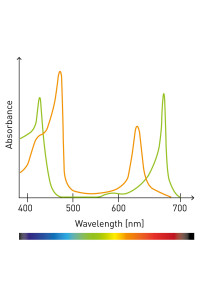Protein Content Measurement (BCA Assay)
- Product Code: 32654
Protein Content Measurement (BCA Assay)
description Service Overview
The BCA (Bicinchoninic Acid) assay is a commonly used method to measure protein concentration in a sample. It's a colorimetric assay that relies on the ability of proteins to reduce Cu2+ ions to Cu1+ ions under alkaline conditions. The resulting Cu1+ ions form a complex with bicinchoninic acid, producing a purple-colored solution. The intensity of the purple color is directly proportional to the protein concentration, and it can be measured spectrophotometrically at a specific wavelength (usually around 562-595 nm).
Materials:
Protein samples
BCA assay kit (includes BCA reagent, BSA standards, and working reagent)
Microplate or cuvettes
Spectrophotometer
Micropipettes and tips
96-well plate or test tubes
Buffer solution (eg, PBS)
Procedure:
Prepare a set of BSA (Bovine Serum Albumin) standards with known concentrations. These standards will be used to create a standard curve for protein concentration.
Dilute the protein samples with a compatible buffer to bring them into the linear range of the assay. This range may vary depending on the kit used but is typically between 0.5 mg/mL and 2.5 mg/mL.
Pipette 200 μL of each standard and diluted sample into separate wells of a microplate.
Add 200 μL of the BCA working reagent to each well containing a standard or sample. Mix thoroughly to ensure proper reaction.
Incubate the microplate at a specific temperature (usually 37°C) for a defined period (eg, 30 minutes) to allow the color to develop.
After incubation, measure the absorbance of each well at the appropriate wavelength (typically around 562-595 nm) using a spectrophotometer.
Plot a standard curve using the absorbance values of the BSA standards. The standard curve will help you determine the protein concentration of samples.
Calculate the protein concentration of samples by comparing their absorbance values to the standard curve.
timeline Service Steps
| Step | Procedure | Expected Result |
|---|---|---|
|
1
|
Prepare phosphate-buffered... |
check_circle_outline
Clear PBS solution with correct pH, ready for dilution of BSA. |
|
2
|
Prepare BSA... |
check_circle_outline
Clear BSA stock solutions at 5 mg/mL and/or 1 mg/mL, well-dissolved. |
|
3
|
Prepare BSA... |
check_circle_outline
A full set of standard solutions covering 0–2000 µg/mL BSA, each with a total volume of 20 µL, clearly labeled. |
|
4
|
Prepare the... |
check_circle_outline
Clear green WR solution, ready for use. No turbidity remains. |
|
5
|
Add standards... |
check_circle_outline
Each well containing 20 µL of standard or unknown sample, properly labeled to track concentration or sample ID. |
|
6
|
Add the... |
check_circle_outline
Well contents fully combined; no visible layering. |
|
7
|
Incubate the... |
check_circle_outline
The color of each well may develop a purple hue corresponding to protein concentration. |
|
8
|
Measure absorbance: -... |
check_circle_outline
Absorbance data are obtained for standards and samples; blank-corrected readings are ready for analysis. |
|
9
|
Generate the... |
check_circle_outline
A standard curve that is typically linear with a high correlation coefficient. Calculated protein concentrations for each unknown sample. |
|
10
|
Record and... |
check_circle_outline
Final verified protein concentrations are ready for reporting or further analysis. |
|
11
|
Calculate... |
check_circle_outline
the value of protein concentration in the sample |
You will receive a report for the protein concentration (ug/ml) fields when we provide this service
Cart
No products



